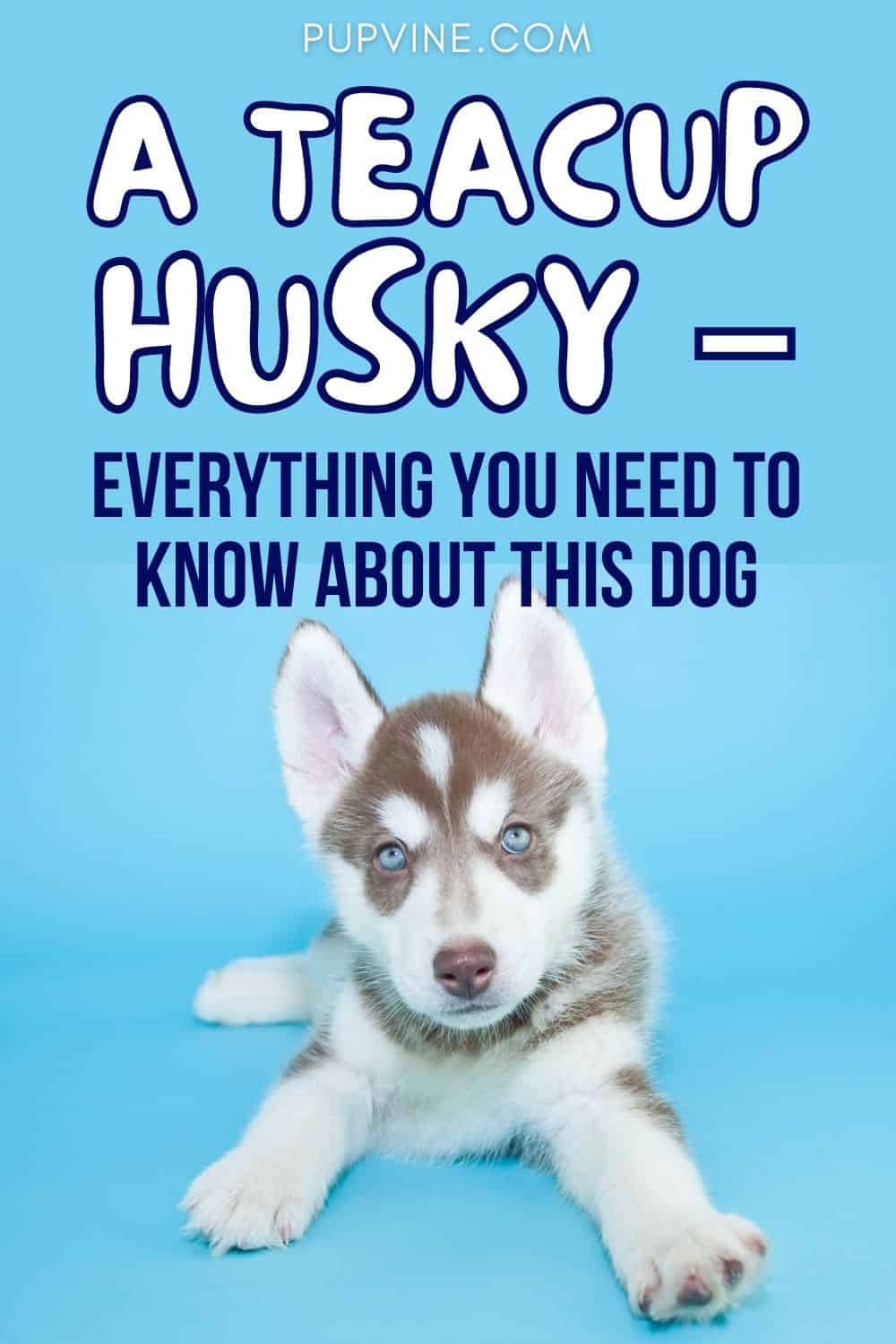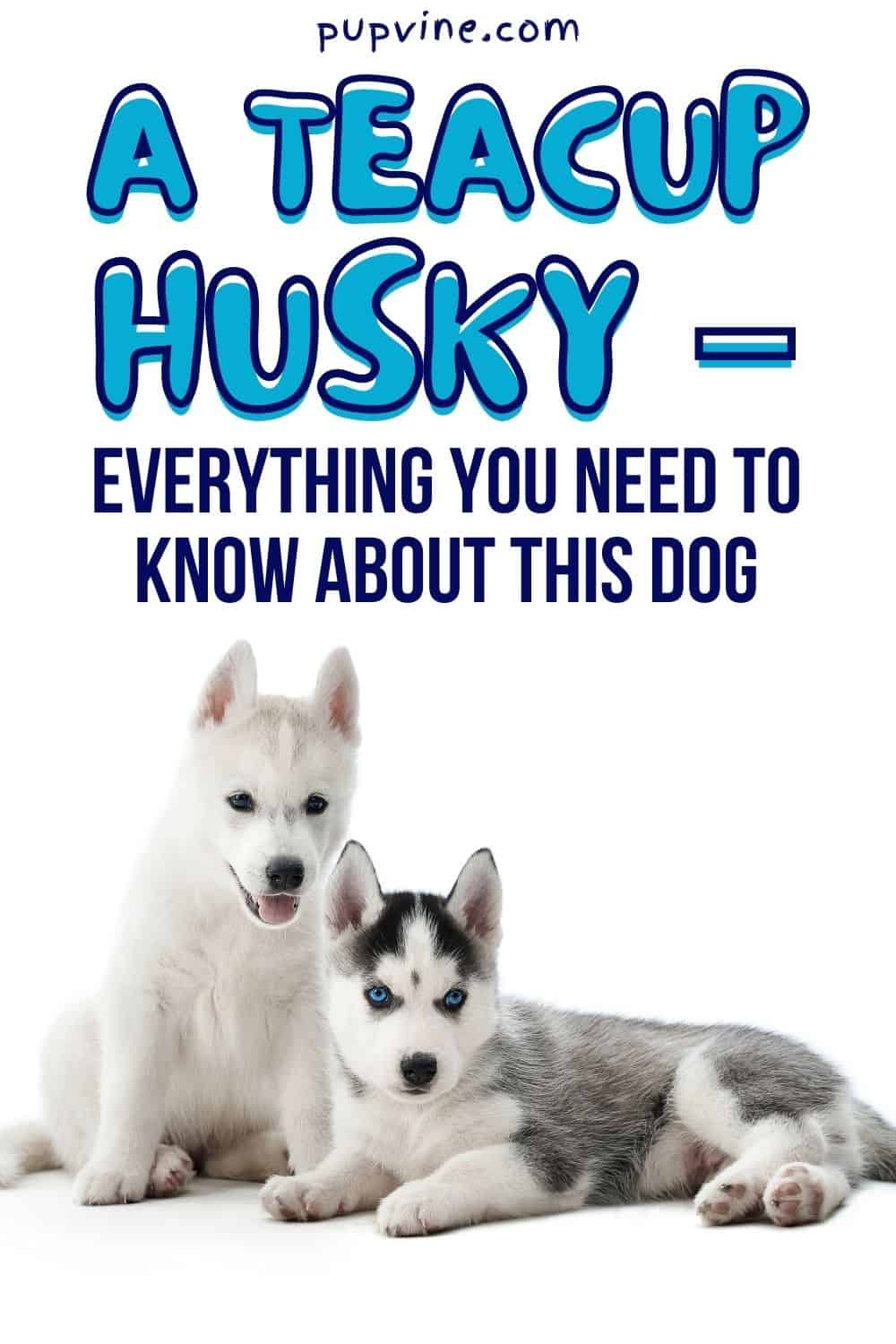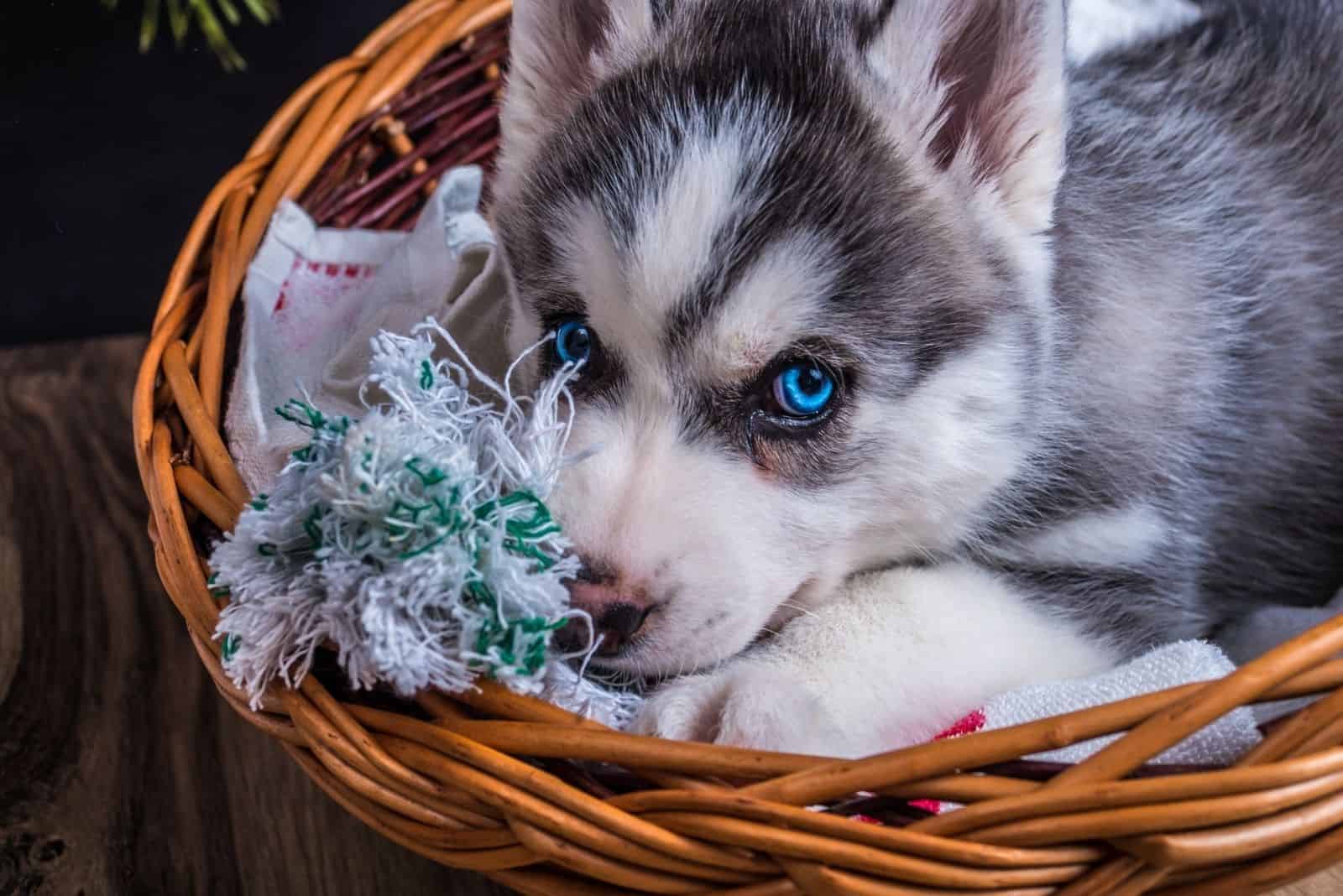Huskies are world-famous working dogs, i.e., sled dogs that are also kept as pets.
Even though these dogs look like wolves, they are not so dangerous. In fact, people who have them as their pets say that they are good-natured, energetic, and super friendly.
And, one more thing – they are one of the most beautiful breeds, for sure.
With both being sled dogs and “wolf hybrids”, Siberian Huskies are often confused with Alaskan Malamutes.
The main difference is the size, with Malamutes being bigger, both in terms of height and weight.
Huskies are pretty tall dogs. However, if you have been wondering if there is a husky that looks like a puppy, even though it’s ‘grown up’ – we have an answer. Theoretically, yes. It is called a teacup husky.
So, what makes them so special? Let’s see.
What is a Teacup Husky?
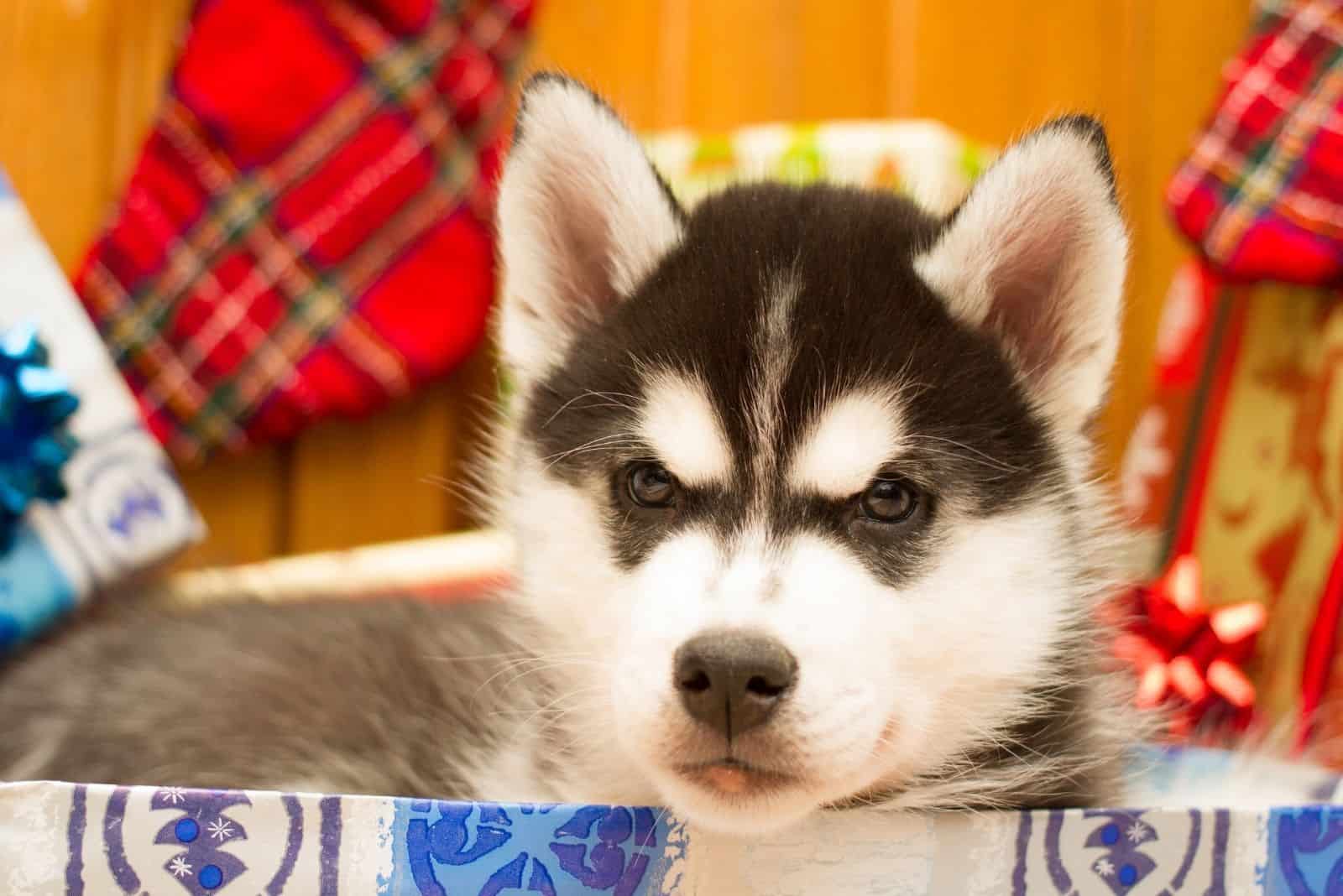
We just love mini huskies – but these super cute Teacup Huskies are even smaller. Just how small can these small dogs be, you wonder? Well, to be honest, we are talking about tea cup size.
Yeah, that small.
A ‘teacup’ is an unofficial term, and it refers to miniature dogs. The word “miniature” can refer to two distinct descriptions of dogs. On the one hand, it can be used to describe dog breeds with a small standard size.
On the other hand, it can refer to the smaller version of larger breeds, such as the miniature Poodle.
Teacup dogs are very popular among the fashion industry community as they are primarily bred for novelty as opposed to health.
People seek out these miniature dogs to be able to carry them in their bags (due to their teacup size), and although that might be really adorable, it comes at a price.
But, before you get to know all you need to know about this dog breed, let’s make something clear.
Teacup husky dogs are not real. Unfortunately, this is the truth. It is actually impossible for a Teacup Husky to exist.
Breeders have experienced great difficulty in breeding the Siberian Husky down to the standard size of a Teacup dog.
Some dog breeds are just incapable of achieving this size no matter how hard breeders try.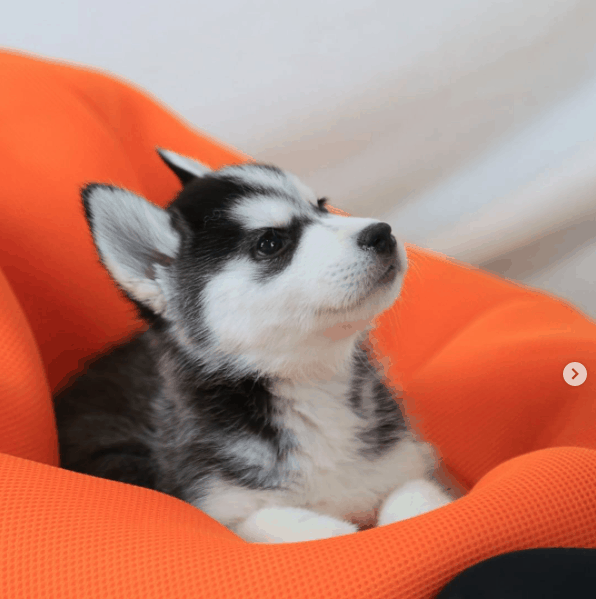
Photo from: @hello_teacuppuppy
The teacup husky dog is one of the most popular dog types in the world, but the fact is, this type of dog does not exist.
An average dog belonging to a toy dog breed weighs approximately four pounds at 12 months, and is 17 inches tall.
Most toy Huskies weigh much more, and are larger than a typical miniature dog. The fact that they are small dogs makes them so adorably cute.
The term ‘teacup’ has become a term for breeders to target internet shoppers.
Any small-sized dog (like a chihuahua, a maltese, a pomeranian, a teacup pomsky, also known as a “designer dog breed,” etc.) can be described as a teacup dog, and consumers will flock to buy it.
The common notion when it comes to animals is the smaller, the cuter. The teacup term expresses this philosophy completely.
It describes the appearance of these animals in a lighthearted and somewhat nonspecific manner.
Without proper description of these animals – that they are below a healthy weight – it is easy for consumers to assume that there are no health issues or conditions with these animals.
Only those who take the time to research the dog breed thoroughly will be aware of the reality.
Teacup Husky Puppies
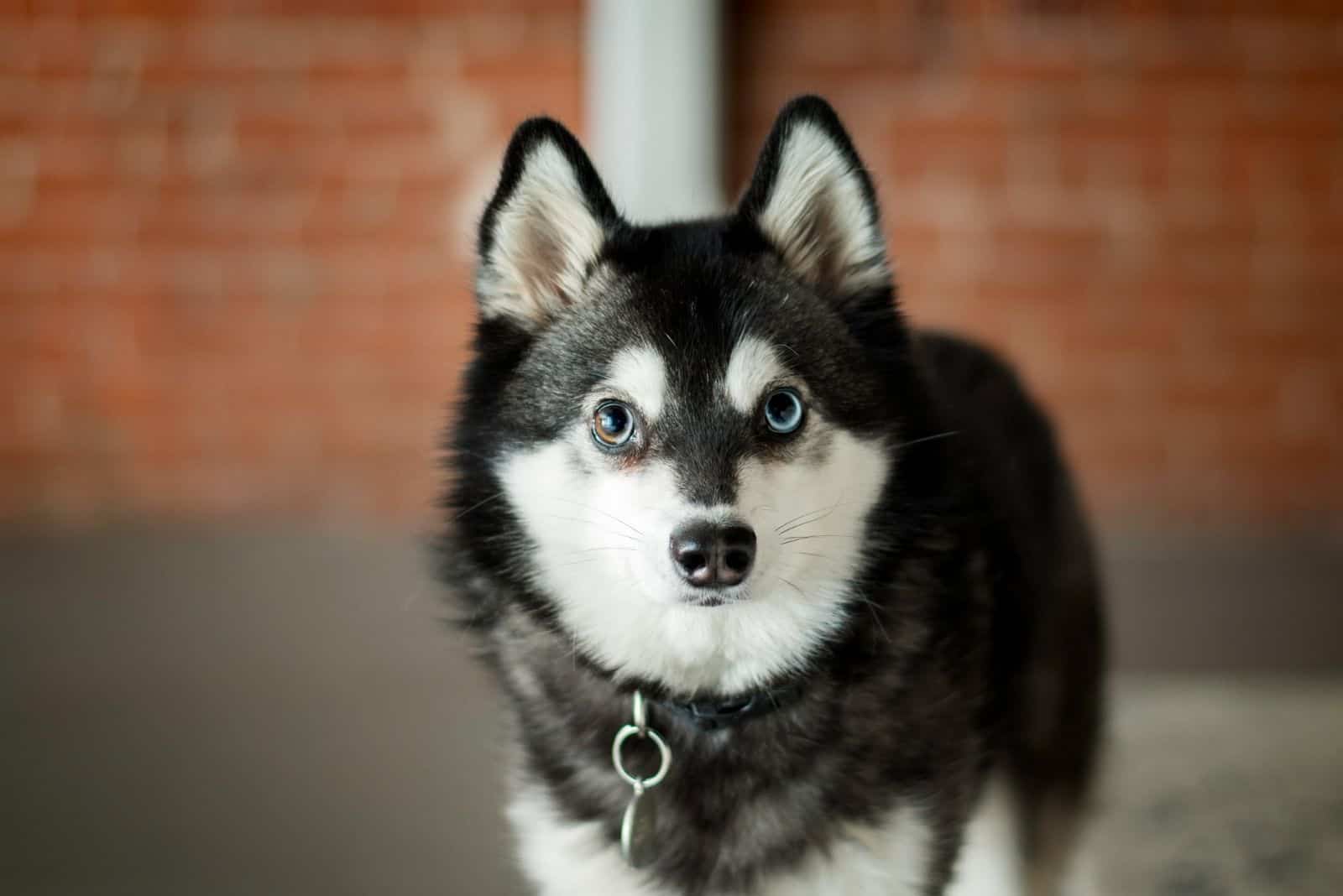
Who would say “no” to those adorable little puppy eyes? Of course, we’ll buy only the best for the cutest teacup Husky ever!
[table id=212 /]
Although breeding teacup dogs is controversial, and more importantly, unethical, some breeders are still in the business of developing them.
We might not be aware of it, but there might be breeders somewhere who are still trying to produce teacup husky puppies.
If you are aware that teacup husky puppies are not real, then avoid the disappointment. There are other dogs you might find interesting.
The ideal candidate for your dog could be the Miniature Husky or the Alaskan Klee Kai.
The Miniature Husky vs the Alaskan Klee Kai
These breeds look very similar to a supposed teacup version of a husky. There are only slight differences in their appearance, such as lighter shades of gray and more white in their coat.
To the untrained eye, their appearance is identical. The true differences lie in their personality and behavior.
The Siberian Husky
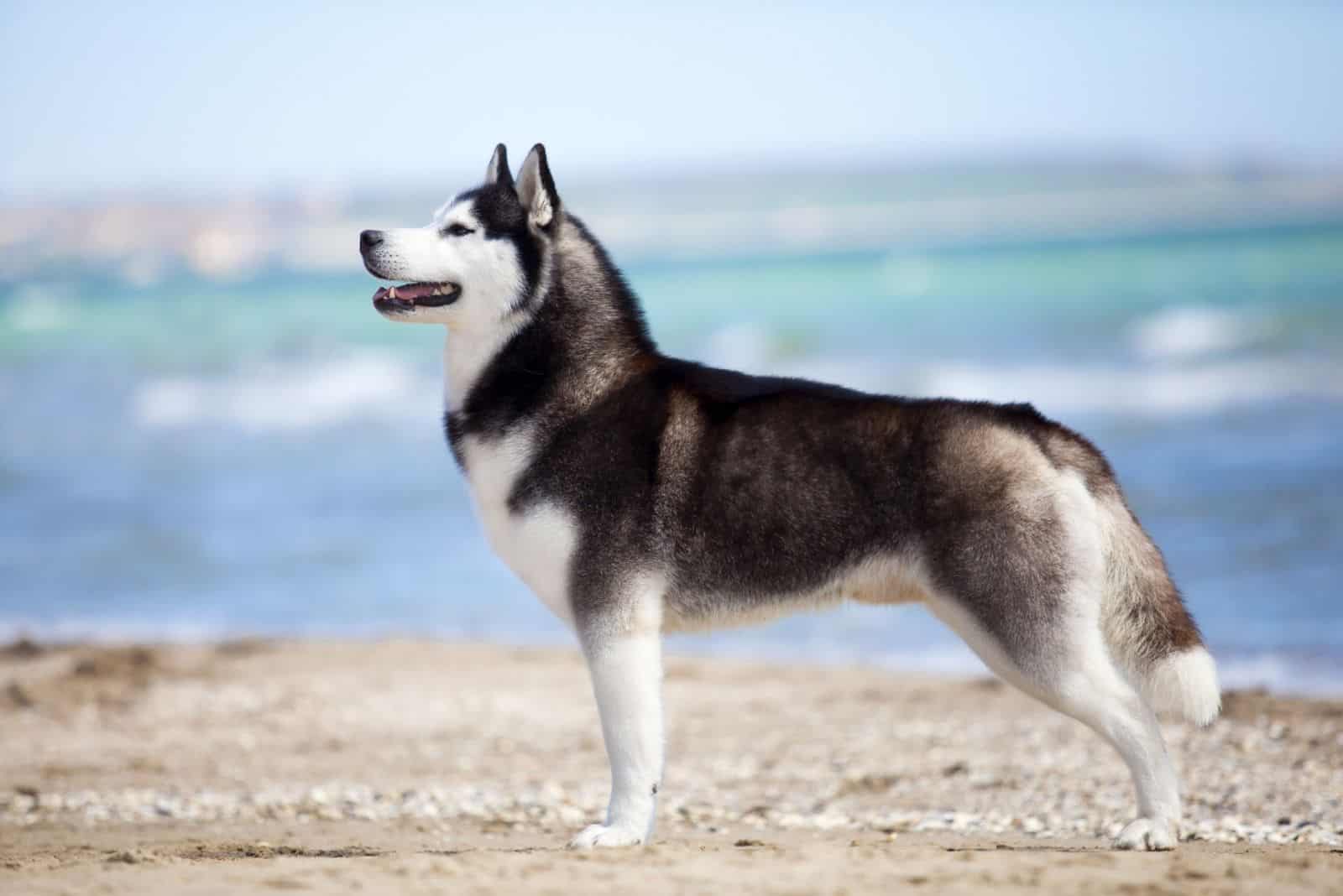
The Siberian Husky is a medium-sized working sled dog breed. It is recognizable by its thickly-furred double coat, erect triangular ears, and distinctive markings.
Siberian Huskies originated in Northeast Asia, where they are bred to this day by the Chukchi people of Siberia for sled-pulling and companionship.
This is an active, energetic, resilient breed whose ancestors lived in the extremely cold and harsh environment of the Siberian Arctic.
William Goosak, a Russian fur trader, introduced them to Alaska in the early 1900s during the Gold Rush, initially as sled dogs.
Today, Siberian Huskies are typically kept as house pets, though they are still frequently used as sled dogs by competitive and recreational mushers.
The Miniature Siberian Husky
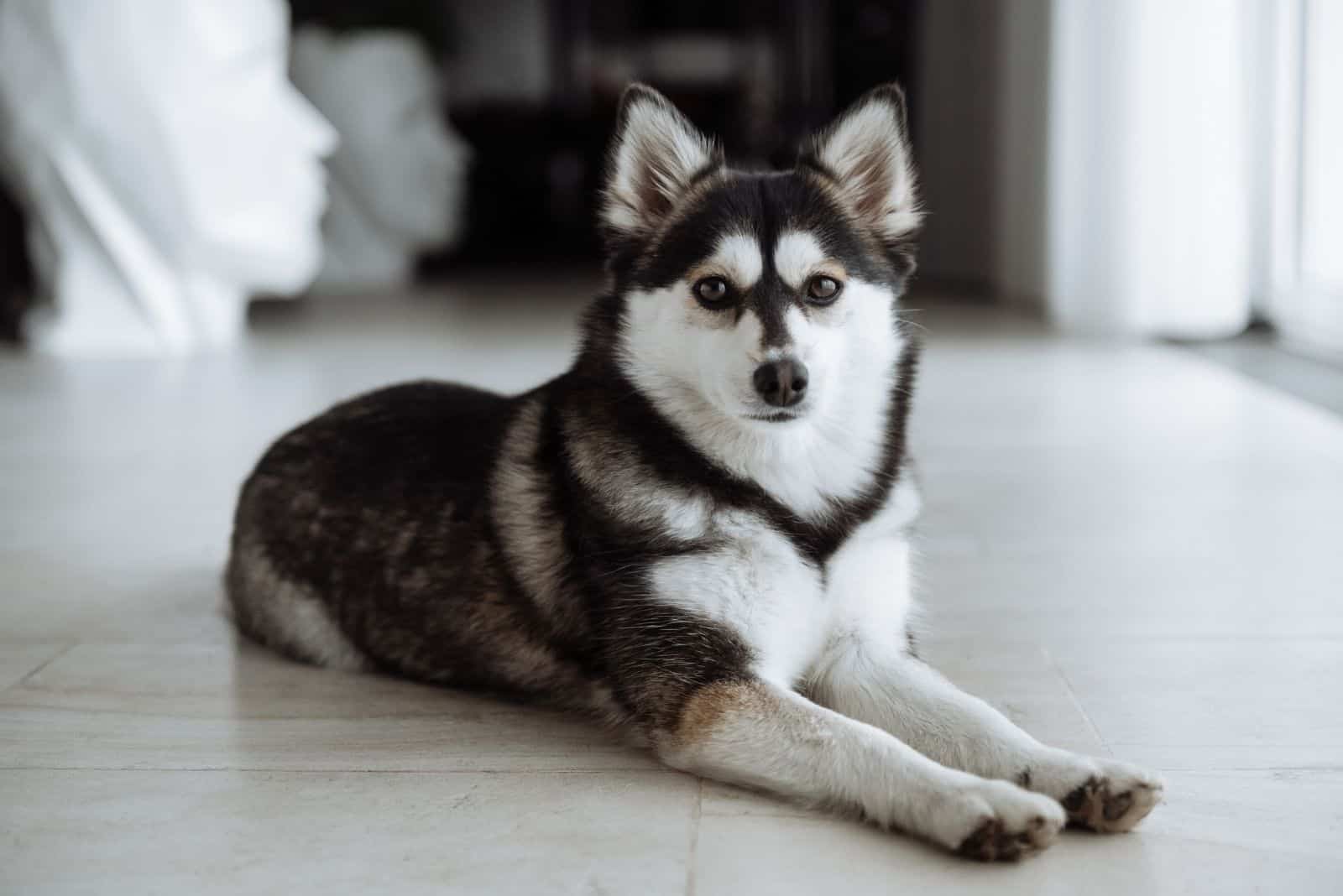
The Miniature Siberian Husky is also called a Mini Husky or the Miniature Husky. The Miniature Husky is simply a smaller version of the original Siberian Husky.
The Miniature Husky breed is known for being friendly, intelligent, and high-energy.
Indeed, they are agile and energetic, and they need to go for obedience training. As this will test your patience, be prepared to get frustrated!
Although it is a small dog breed, a Miniature Husky has high energy levels. In addition to its intelligence, it needs constant mental and physical health stimulation, which are best achieved through exercising and playing.
Moreover, be aware of its prey drive since it tends to chase animals such as rabbits, cats, etc. Thus, it is important to socialize it well with small animals from a young age.
It has a gentle personality and it is the perfect companion that adores human attention, but can get quite clingy.
How big does a Miniature Husky get?
The Miniature Husky, as the name suggests, it’s relatively small.
Mini Huskies are typically half the size of a standard Siberian Husky; a full-grown Miniature Siberian Husky can weigh 20 to 35 lbs (9 to 15 kg), and can be 13 to 17 inches (32 to 43 cm) in height.
Do Mini Huskies shed?
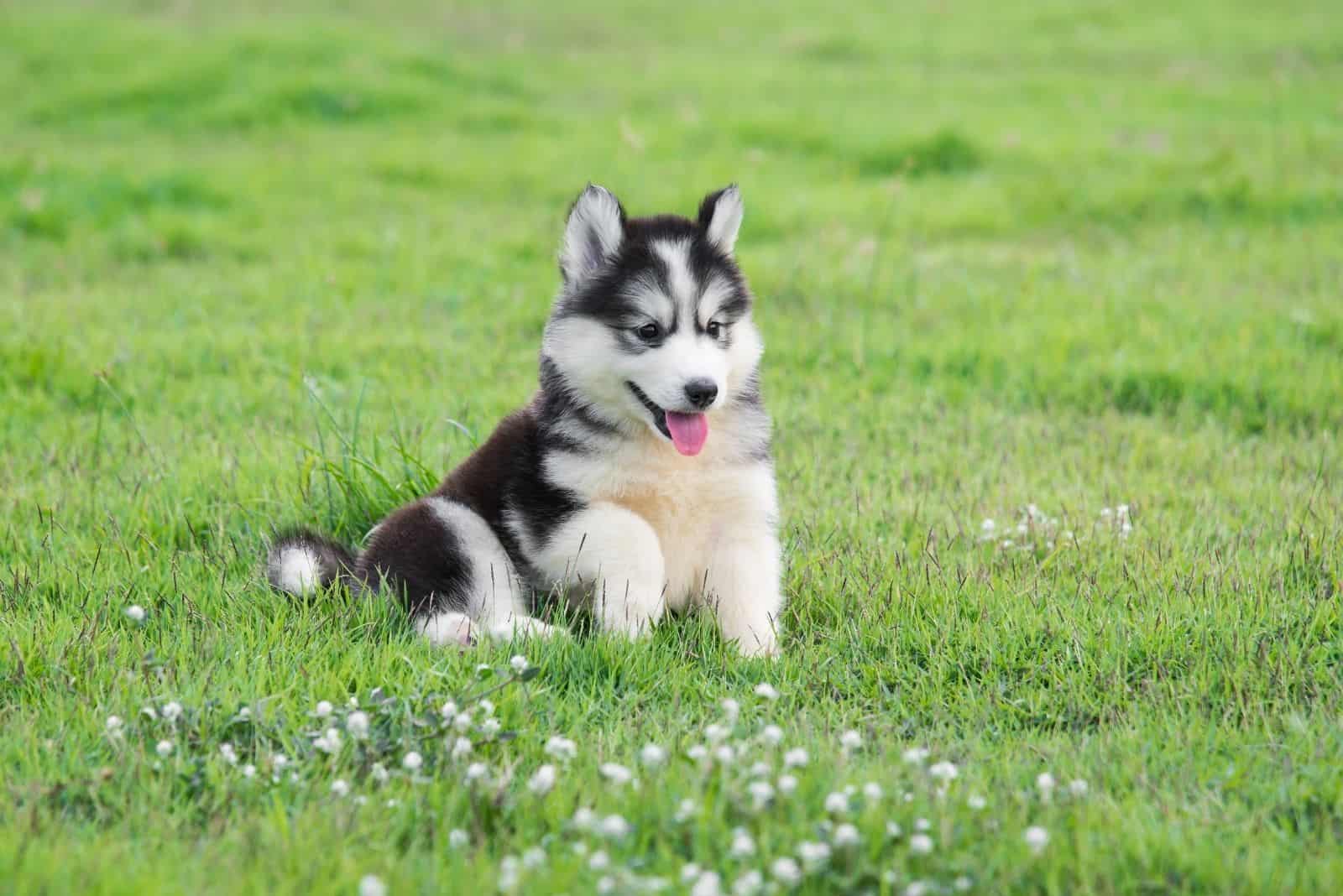
Just like a regular Husky, Mini Huskies are known for shedding their undercoat twice a year.
To minimize the chances of infections, bathe your Mini Husky once a month or less, and to maintain its coat, make sure that you brush it regularly, at least once per week.
Introduce the grooming routine while young since starting them while they are older can irritate them and make them aggressive.
A Mini Huskies’ health
Mini Huskies are prone to genetic health complications just like other dog breeds. They may suffer from eye disorders, especially males, which can lead to blindness.
Furthermore, they are prone to follicular dysplasia, a disease which causes hair loss or scaly skin. Thus, if you notice any hair loss, it is extremely important to see a vet as soon as possible in order to prevent further damage.
Another common health issue is laryngeal paralysis, a disease causing breathing difficulties. Luckily, it develops slowly and the Miniature Huskies usually outlive it.
How much is A Miniature Husky?
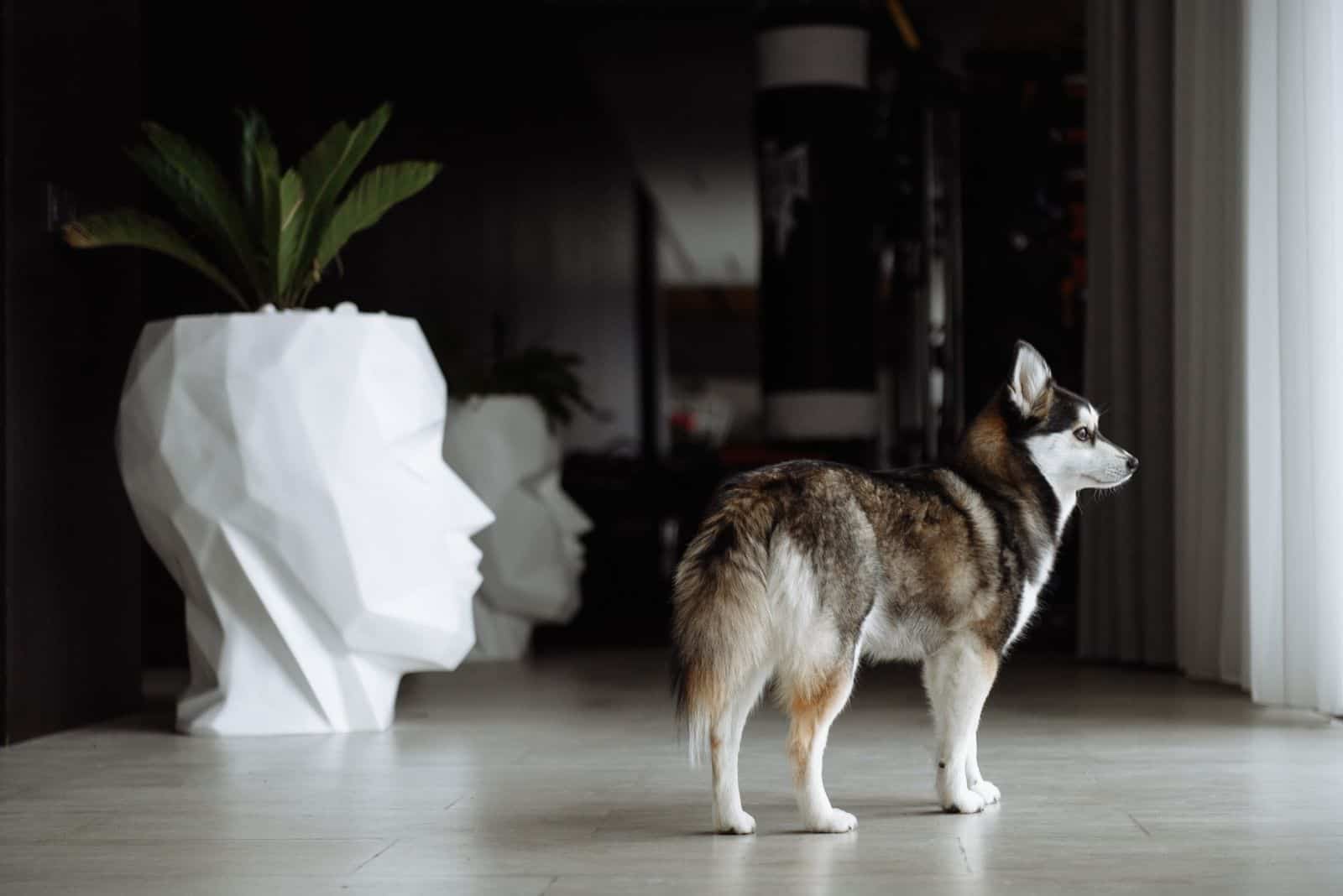
If you want to know how much a Miniature Husky costs, well, it’s not cheap. They can cost up to $2,500.
The breed has been around for nearly 30 years now, and the Miniature Husky is created by purposely breeding small-sized Siberian Huskies.
The breed was developed in the 1990s by Bree Normandin. Although it is not related to the Alaskan Klee Kai, it has the same features – erect ears, a proud profile, and a thick double coat.
The American Kennel Club (AKC) doesn’t recognize Mini Siberian Huskies as a distinct breed.
The Siberian Husky vs. The Miniature Husky
It’s important to note that the only difference between the Miniature Husky and the Siberian Husky is the size.
They are the same exact breed in the genetic sense, and they share the same colors, behaviors, and other traits of their bigger cousins.
One notable difference is the eye color – Siberian Huskies have light blue eyes while Miniature Huskies have brown eyes. The lifespan of this adorable small husky breed is 12 to 14 years.
Purebred or mixed?
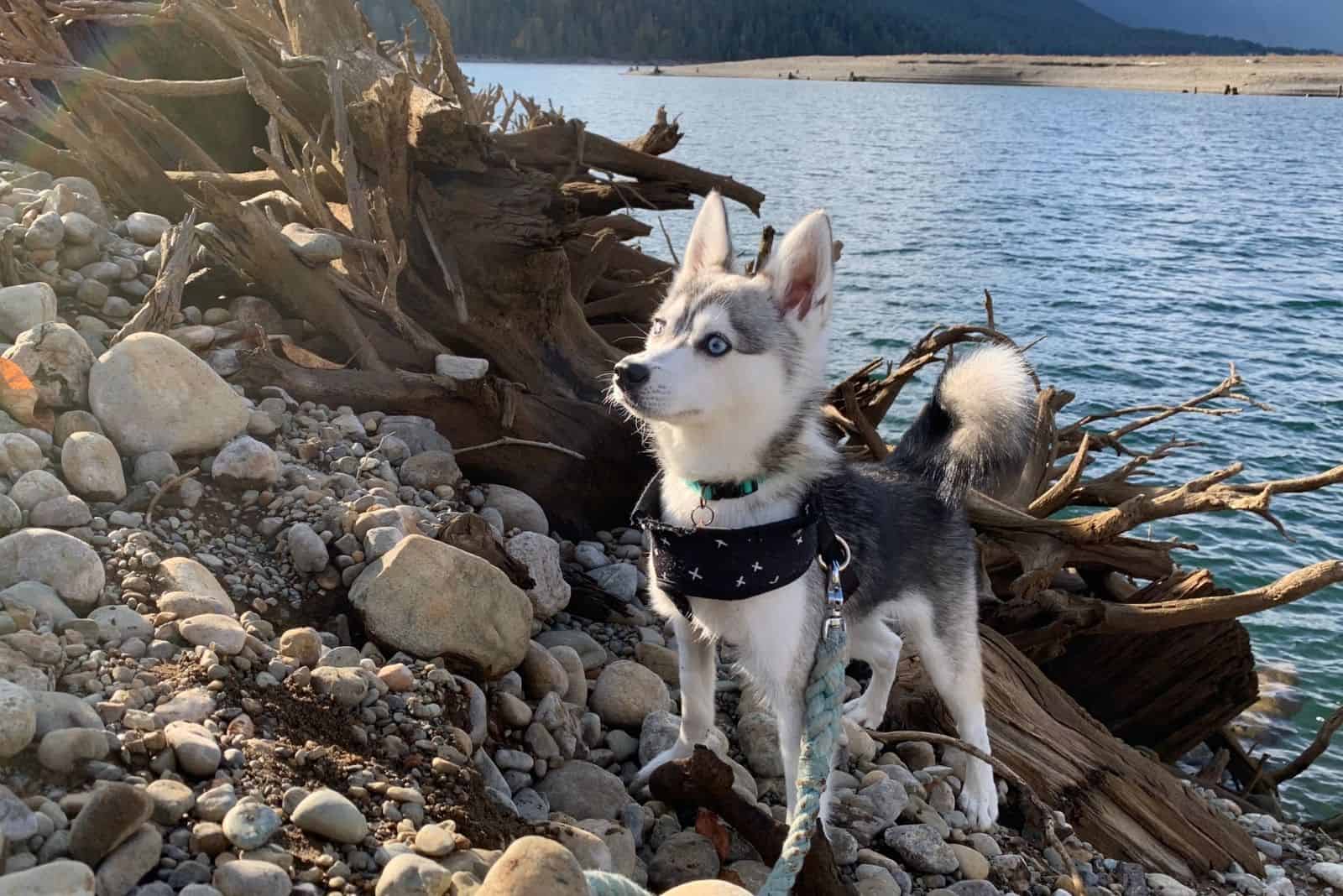
Purebred Mini Husky puppies are usually priced from $1000 USD to $4500 USD, and some husky puppies for sale may be shipped worldwide and even include crate and veterinarian checkups.
Various Miniature Husky dog breeders with puppies for sale also offer a health guarantee.
There are thousands of Miniature Husky puppies for sale and hundreds of Miniature Husky dog breeders, which guarantees you to find the perfect Miniature Husky puppy.
Bear in mind that the Miniature Husky needs an experienced dog owner and, as such, is not a suitable choice for first time dog owners or beginners.
To succeed in training a Miniature Husky, you’ll have to assert yourself as a pack leader and have a confident, firm attitude, coupled with positive reinforcement methods.
The Alaskan Klee Kai
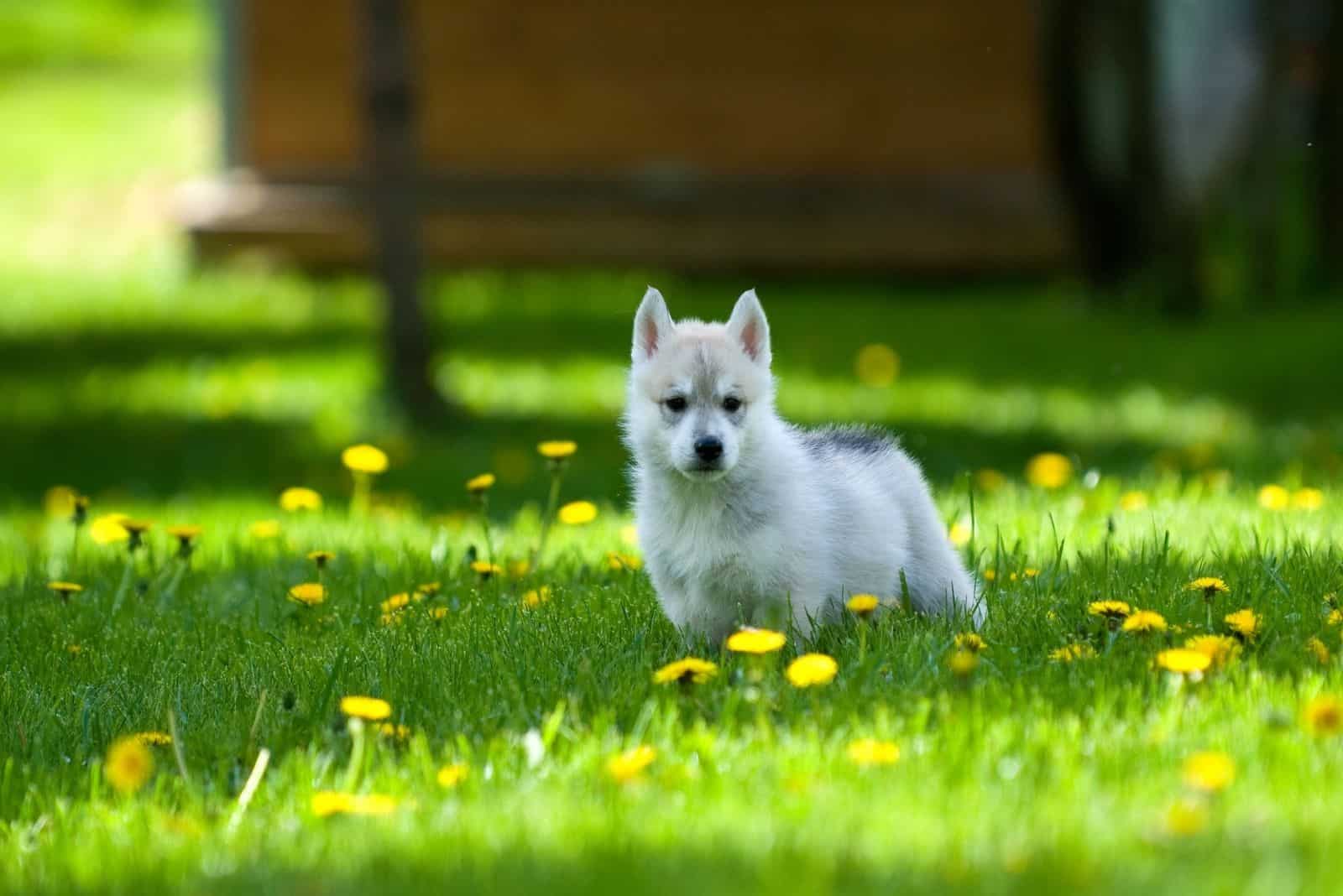
The Alaskan Klee Kai is a smaller version of the Alaskan Husky, though it physically resembles the Siberian Husky. Also, it has more color variations since it’s not a purebred dog.
Linda Spurlin developed them in the 1970s in a little town in Alaska called Wasilla after discovering that Huskies could be small-sized.
Due to its diverse genetic makeup, the Alaskan Klee Kai is less predisposed to health issues.
This breed is part of the Spitz family, and they look like a miniature Alaskan Husky.
According to breed standards, an adult Alaskan Klee Kai should be between 13 and 15 inches in height.
They should weigh between 9.9 and 15 pounds. The breed has an average life expectancy of between 12 and 16 years.
The Alaskan Klee Kai is a loyal and highly intelligent dog. It requires moderate exercise and, because of their heavy coats, it should be monitored for signs of heat exhaustion and dehydration during hot summer months.
This breed sheds moderately, and overall, has a positive health outlook.
However, since they are still a relatively new breed of dog, owning the Alaskan Klee Kai requires a certain level of responsibility. Before purchasing this dog breed, make sure that you are buying from a reputable breeder.
Only certain animals conform to the standards of a true Alaskan Klee Kai, and only an experienced and qualified breeder will be able to identify those characteristics.
This breed makes the perfect companion and will offer years of unconditional love and affection. They are the epitome of a big personality in a little package.
How do you take care of teacup dogs?
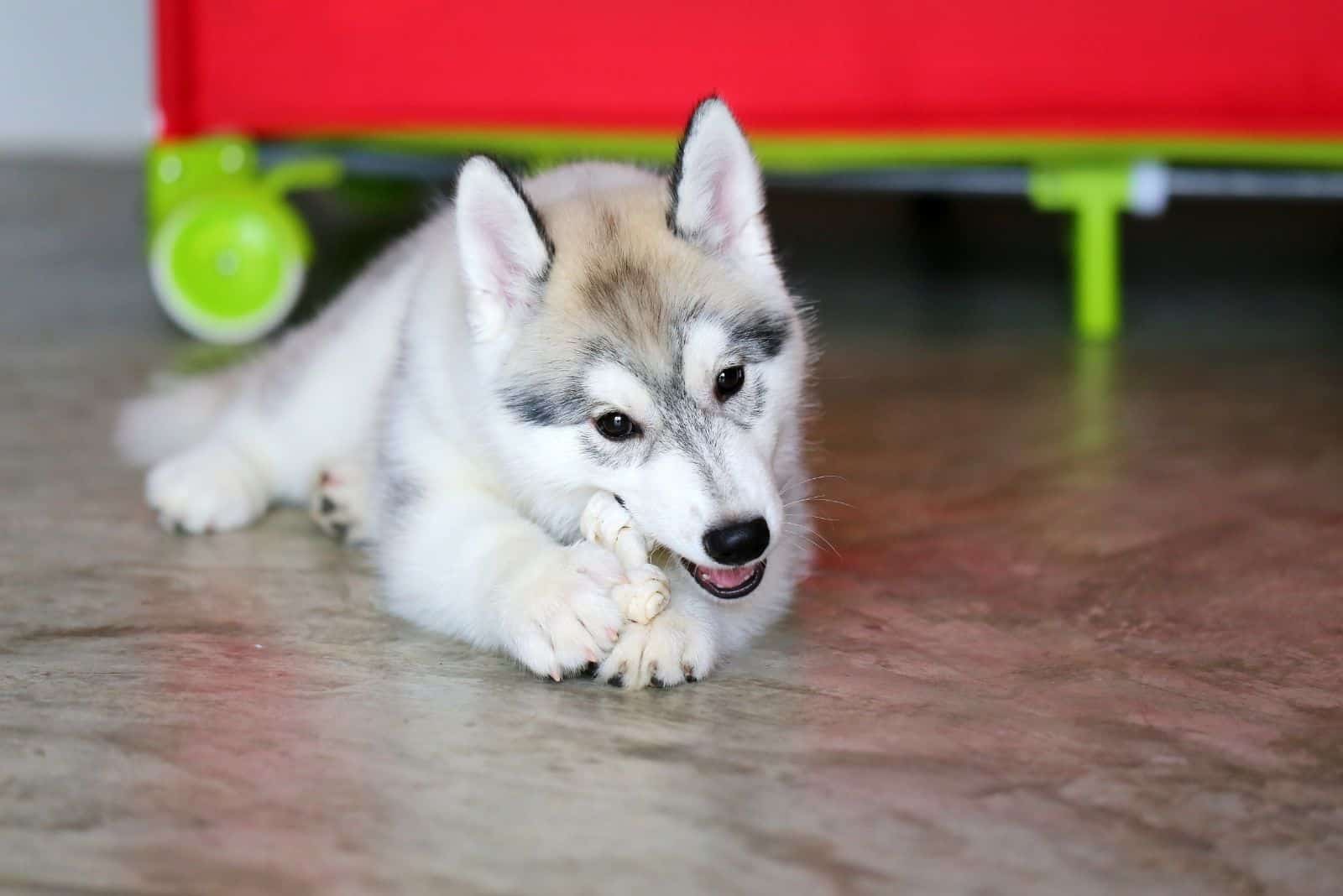
The care for teacup dogs doesn’t differ much from the care of any other dog breed. It is important to provide them with fresh food and water, and groom them regularly.
However, due to their small size, these small breed teacup dogs are prone to health problems caused by fragile bones, and if not handled well, these health problems can quickly become life-threatening emergencies.
1. Healthy diet
Teacup size dogs should be fed a diet rich in fiber. Due to their health problems, such as low blood sugar, it is advisable to choose food that contains Karo syrup, an ingredient that can help counteract low blood sugar.
Furthermore, fresh water should always be provided and refilled each time you notice the water is murky or running low. Be aware of their small size and carefully choose the size of the water bowl.
In addition to high-quality dog food, you can introduce some human foods into your teacup dog’s life. Some of the foods we eat that are completely safe for our canine companions are edamame, sauerkraut, jasmine rice, fish sticks, and tuna.
2. Getting rest
Teacup puppies tend to play hard and feel very tired after playful activity. Teacup puppies need about 14 hours of sleep a day.
Thus, it is extremely important to limit their playtime to hour-long sessions in order to keep them rested.
3. Discourage unwanted behaviour
Socialization and training are the first steps in obtaining good behavior. Given the fact that small dogs cannot cause much damage, many dog owners usually ignore bad behaviour.
However, if you want your puppy to be well behaved, you will have to discipline it for chewing household objects, unwanted barking, being aggressive towards people, etc.
It is important to be consistent as your teacup size puppy will eventually learn which behaviors are unacceptable. But, you should not yell or isolate a puppy as punishment since it proves to be ineffective.
4. Groom your teacup dog regularly
How often you need to groom your puppy depends on its age. Short-haired teacup breeds, like some chihuahuas, compared to long-haired breeds, like Yorkshire Terriers and Toy Poodles, will not need grooming as often.
Long-haired puppies should be brushed as their hair becomes tangled, and professional grooming is recommended, while short-haired puppies only need light brushing occasionally.
5. Protecting Teacup dogs from Size-Related Problems
It is important to protect your dog from trauma since teacup dogs are extremely fragile, and you should also be very careful when holding them.
Be careful not to accidentally step or sit on them. Furthermore, monitor children’s interactions with these puppies, and reconsider the idea of getting a teacup puppy if you have very young children.
It is important to keep all these things in mind in case you decide to get a Teacup Husky, a Miniature Husky, or maybe another Siberian Husky mix!
Is breeding teacup dogs considered ethical?
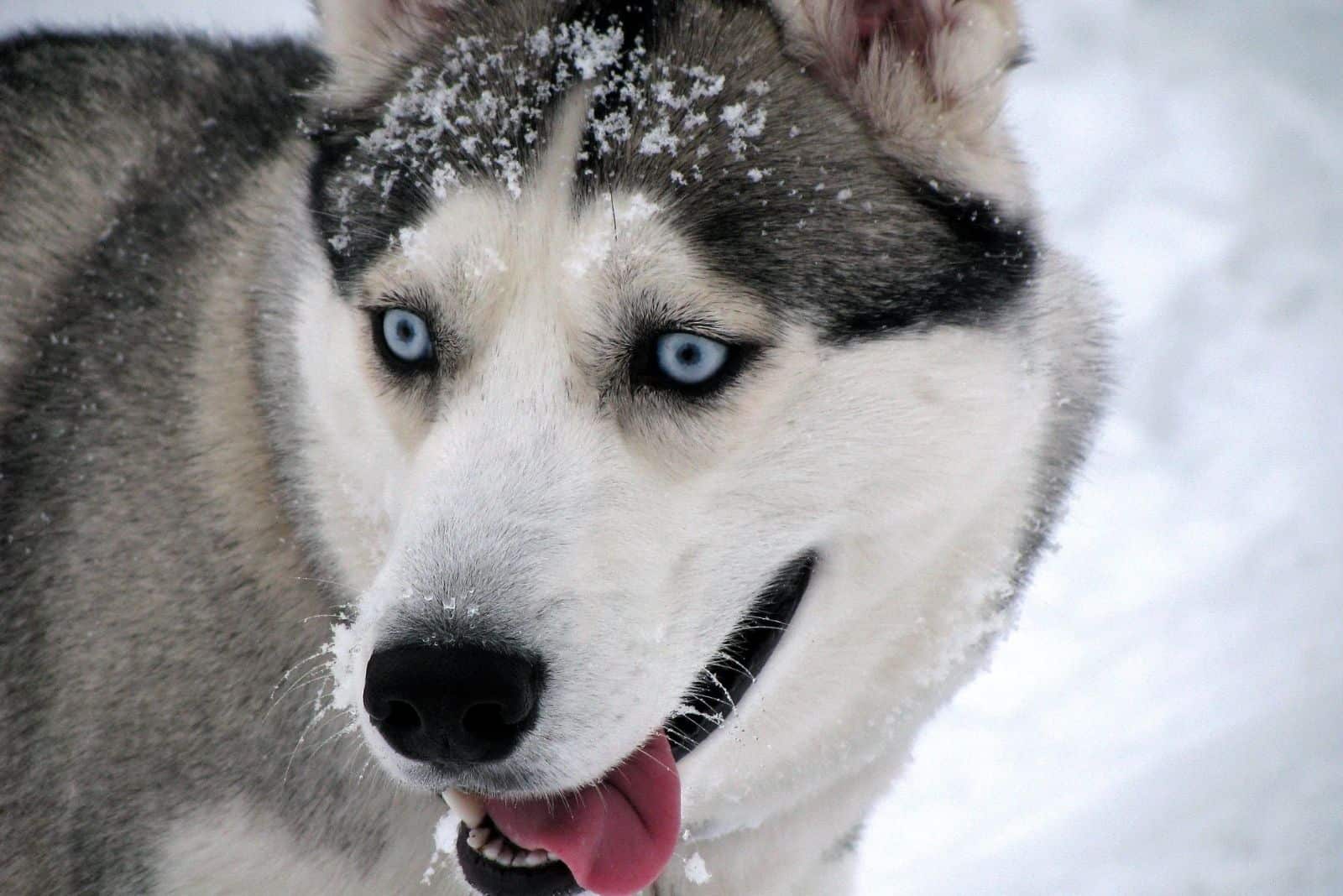
Many animal advocates state that if you love dogs, you should not buy teacup pups since their breeding is unethical. Thus, it is a good thing that Teacup Huskies are nonexistent!
The genetic modification and inbreeding done by teacup dog breeders can indeed be horrendous and irresponsible, raising the question of whether it should be considered illegal.
While breeding, most of them use abnormally small dogs with existing health issues.
If you are considering buying or adopting an adult or pup classified as a “teacup,” put in the effort to get a certificate of good health from an expert vet before making the transaction.
A reputable breeder will provide you with a contract that includes a health guarantee. This agreement should require you to have the puppy inspected by a veterinarian of your choosing immediately after purchase.
If your breeder does not offer this contract when you are going to buy a puppy, then chances are they are not a responsible source.
To conclude
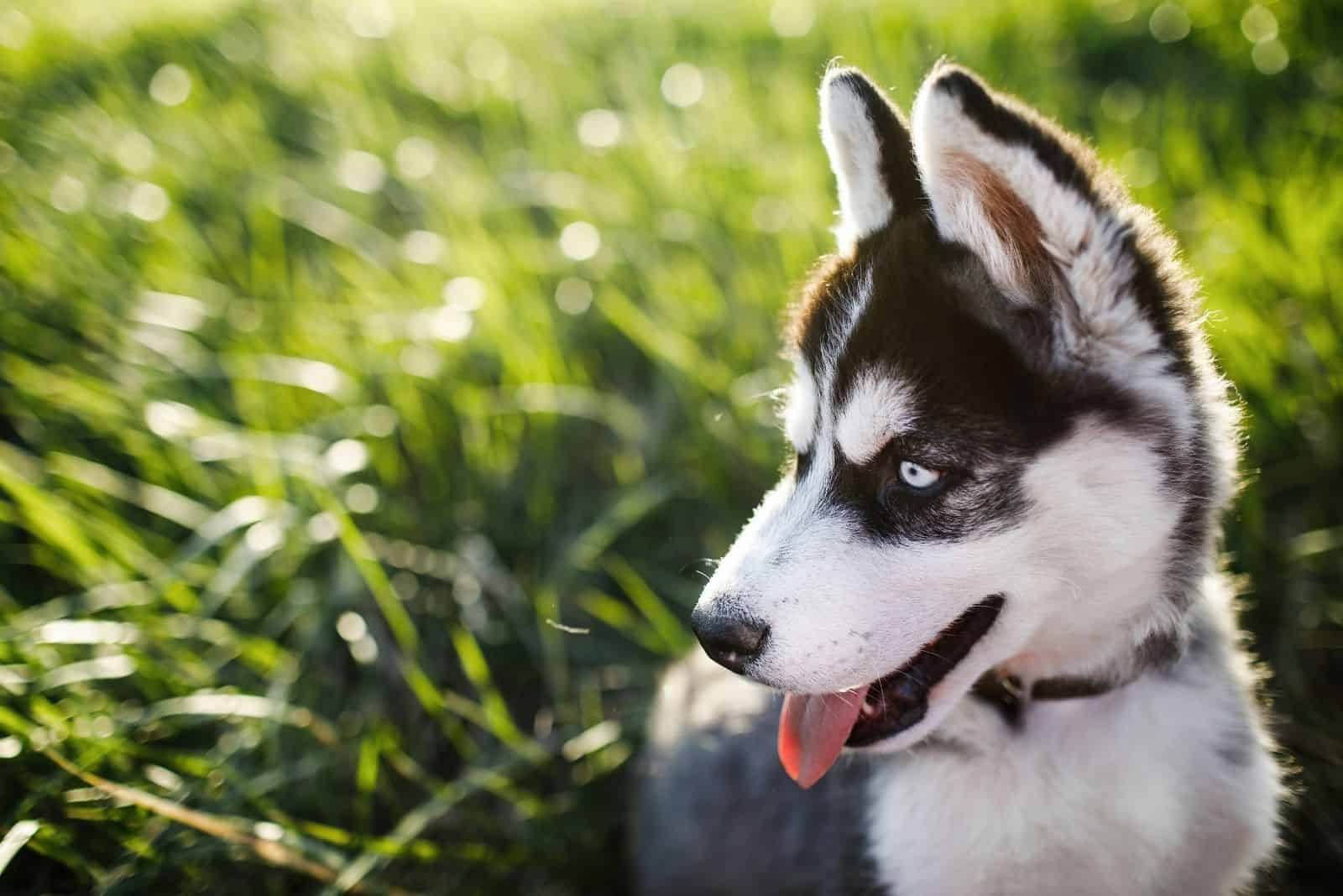
Our pets are part of our family. We just love them and can’t imagine our lives without them. Be a wise pet owner and inform yourself about the breed you decide to buy or adopt.
And, if you are really interested in buying a teacup size dog, then make sure you buy it from a breeder who follows all ethical standards.
The quickest and most effective way to put unethical breeders out of business is to stop purchasing their animals.
Read Next: Best Husky Raw Diet: Going Back To The Roots
